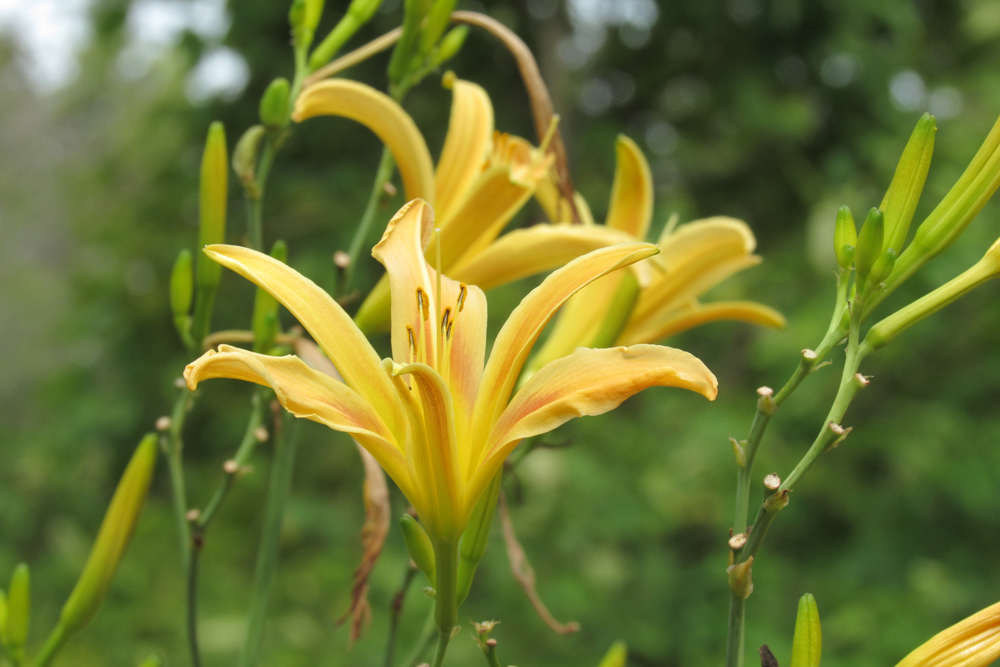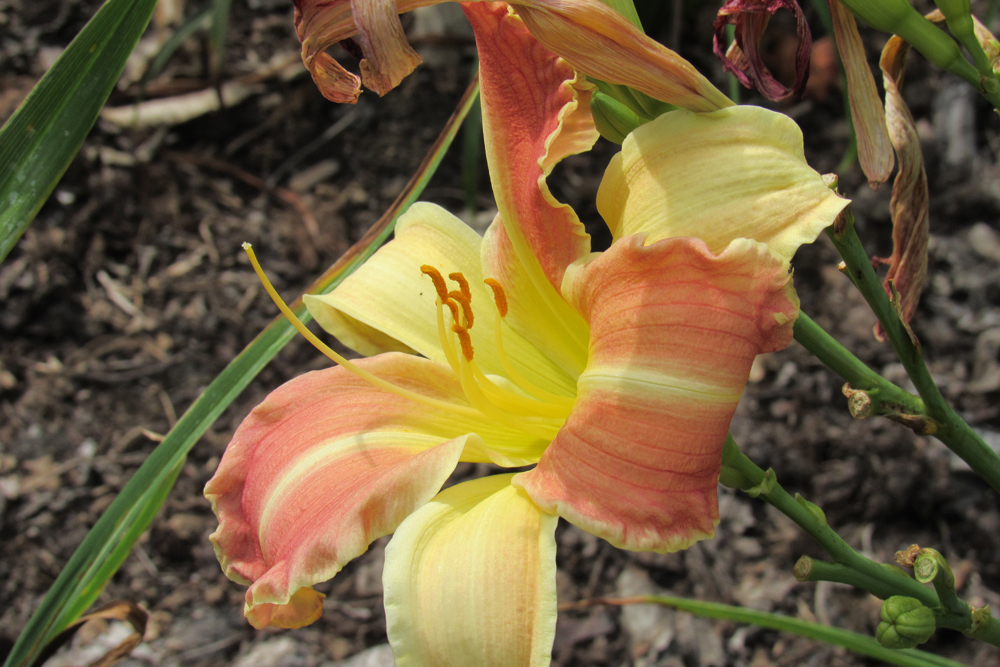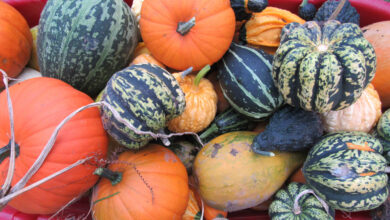Delightful Daylilies

I finally got a chance recently to visit the historic daylily garden at the Ogden Historical Society’s Colby-Pulver House. Despite the lateness of the season, the daylilies looked beautiful and some were still in bloom.
After several years of hard work and planning, the garden was dedicated this past July. It is meticulously laid out – historical daylilies in one section followed by a progression of daylily cultivars (including those by hybridizers from around New York State including Rochester) up to the most cutting edge varieties. The garden has been designated a historic daylily garden by the American Hemerocallis Society (AHS) – quite a distinction.
I had a chance to speak with Jean Colby, a member of the Ogden Historical Society, and she pointed out a special section of the garden which will be used to educate visitors about the hybridizing process. She says the garden peaks in late July through early August, but the serene spot is a place to soak in inspiration throughout the growing season.
Daylilies are the official flower of the Village of Spencerport and the Town of Ogden and they are a fantastic addition to any home garden and landscape. They provide foliage and colorful blooms which can stand alone or provide a backdrop for other plants. Daylilies are extremely hardy and can adjust well to many different growing conditions. While it’s true that each daylily blossom lasts only one day – plants can put out an abundance of buds – sometimes hundreds – meaning colorful daylilies can bloom for several weeks to even months during a single season.
Here are some growing tips from the University of Minnesota Extension. Daylilies tolerate some shade, particularly during the mid-day hours, but they will do best if they get at least six hours of sunlight a day. Avoid planting near trees and shrubs, which will compete with the plants for nutrients and water. The plants are adaptable to various soil conditions, but prefer slightly acidic soil that is high in organic matter and well drained. Daylilies are drought tolerant, but like about an inch of water a week during the growing season to really put on a nice show of blooms.
There are a dizzying variety of cultivars, more than 35,000. To make sure the varieties you choose are hardy for our area, purchase plants from a local garden center or visit display gardens like the one at the Colby-Pulver House for inspiration. Daylily bloom times range from June through September. Blooms come in a variety of shapes and colors. Some are full and round, some have ruffly edged petals, some are spider shaped with long, narrow flower petals. There are also double blooms with twice the number of petals and sepals. Colors include apricot, yellow, purple, pink, red, orange and white. Stunning bi-colors are also available.
Mulching your daylilies can help prevent weeds, which have a way of working into daylily clumps very easily. Keep soil moist for the best bloom and dead-head your daylilies. Removing seed heads can help promote good flowering next year.
Early spring or immediately after flowering are the best times for dividing daylilies. Most varieties benefit from dividing every three to five years.




